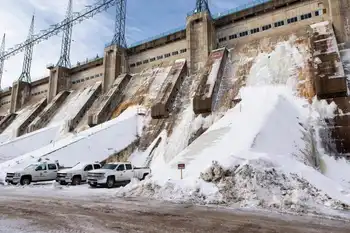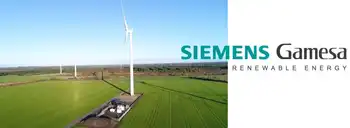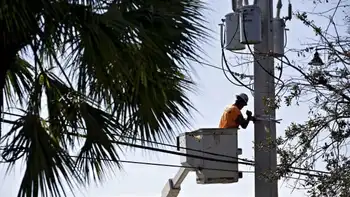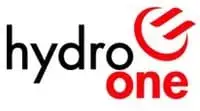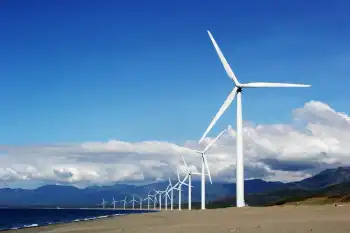China looks to concentrated solar technology
By New York Times
NFPA 70e Training - Arc Flash
Our customized live online or in‑person group training can be delivered to your staff at your location.

- Live Online
- 6 hours Instructor-led
- Group Training Available
So-called concentrating solar power uses hundreds of thousands of mirrors to turn water into steam. The steam turns a conventional turbine similar to those in coal-fired power plants. The technology, which is potentially cheaper than most types of renewable power, has captivated many engineers and financiers in the last two years, with an abrupt surge in new patents and plans for large power operations in Europe and the United States.
This year may be ChinaÂ’s turn. China is starting to build its own concentrating solar power plants, a technology more associated with California deserts than ChinaÂ’s countryside. And Chinese manufacturers are starting to think about exports, part of ChinaÂ’s effort to become the worldÂ’s main provider of alternative energy power equipment.
Yet concentrating solar power still faces formidable obstacles here, including government officials who are skeptical that the technology will be useful on a large scale in China.
Much of the country is cloudy or smoggy. Water is scarce. The sunniest places left for solar power are deserts deep in the interior, far from the energy-hungry coastal provinces that consume most of ChinaÂ’s electricity. Provinces deep in the interior have few skilled workers or engineers to maintain the automated gear that keeps mirrors focused on towers that transfer the heat from sunbeams into fluids.
Concentrating solar power “is not very suitable for China,” wrote Li Junfeng, a senior government energy policy maker, in a detailed e-mail reply to questions.
Yet the private sector in China is racing to embrace the technology anyway.
A California solar technology company and a Chinese power equipment manufacturer signed a deal recently for the construction of up to 2,000 megawatts of power plants using concentrating solar power over the next decade, executives from both companies said. That is equivalent to the output of a couple of nuclear power plants. They will start with a 92-megawatt plant in Yulin, a town in a semi-desert area of Shaanxi Province in central China.
The Chinese equipment manufacturer, Penglai Electric, hopes to work with other Chinese manufacturers to drive production costs down precipitously, clearing the way for exports, although these would require further approval from the California licensor of the technology, eSolar.
Eric Wang, the senior vice president for international business development at Penglai Electric, said that manufacturing mirrors, turbines, towers and other equipment in China instead of the United States could cut costs by at least half. That could make concentrating solar power more competitive with other forms of power generation around the world.
ChinaÂ’s Ministry of Science, the Beijing municipal government and the Chinese Academy of Sciences are already building AsiaÂ’s first concentrating solar power plant on the outskirts of Beijing, although it is only a pilot operation to generate 1.5 megawatts.
Preparations are also under way for the construction of a 50-megawatt concentrating solar power plant in Gansu Province in northwestern China, said Min Deqing, a renewable energy consultant in Lanzhou, the provincial capital of Gansu.
But while nuclear power, wind energy and photovoltaic solar panels have strong backing from ChinaÂ’s political leaders and enormous financing by government-owned banks, concentrating solar power still faces deep-rooted skepticism in senior ranks of the government.
Unlike in the United States, the roots of that skepticism do not lie in concerns about disrupting the habitat of rare species in sunny, desert areas — a worry that may block some attempts to build concentrating solar power plants in the Mojave Desert.
Mr. Li wrote that concentrating solar power works best when cheap water, cheap land and lots of sun are available in the same place — a rare combination in China. Mr. Li also expressed concern that concentrating solar power would prove more expensive per kilowatt-hour generated than photovoltaic solar power, a technology in which China is already the world’s low-cost supplier.
Mr. Li has a lot of influence on these issues. He is a deputy director general for energy research at the National Development and Reform Commission, the top economic planning agency in China. And he is the secretary general of the government-backed Chinese Renewable Energy Industries Association, which helps oversee these industriesÂ’ operations in China.
But Mr. Li did say that he saw a limited role for concentrating solar power, particularly in places where it could be combined with other power plants, or where it could be combined with a way to store power overnight. Penglai and eSolar hope to do both.
Water consumption, mainly to condense the steam after it has been used to generate electricity, is another potential weakness of the technology. Water tends to be scarce in deserts, of course. Penglai and eSolar are leaning toward air cooling instead of water cooling, at the price of cutting the efficiency of their plant.
Mr. Gross said the eSolar technology could also be used to create extra heat during the day, with the heat being stored and used to generate power at night — a form of the electricity storage sought by Mr. Li.
Despite the governmentÂ’s skepticism, renewable energy investors remain enthusiastic about the potential for concentrating solar power projects in China. K. K. Chan, the chief executive of Nature Elements Capital, a renewable energy investment fund in Beijing, said that he had been looking at such deals in recent months after concluding that the valuations for photovoltaic solar projects were unreasonably high, possibly because that technology had such strong government backing.
Mr. Min in Lanzhou said that while there was little data yet on the cost of concentrating solar power, the price tag was likely to fall in China. “Eventually, when 100 percent domestically produced mirrors are used,” he said, “the cost will be lower than solar panel power plants.”





